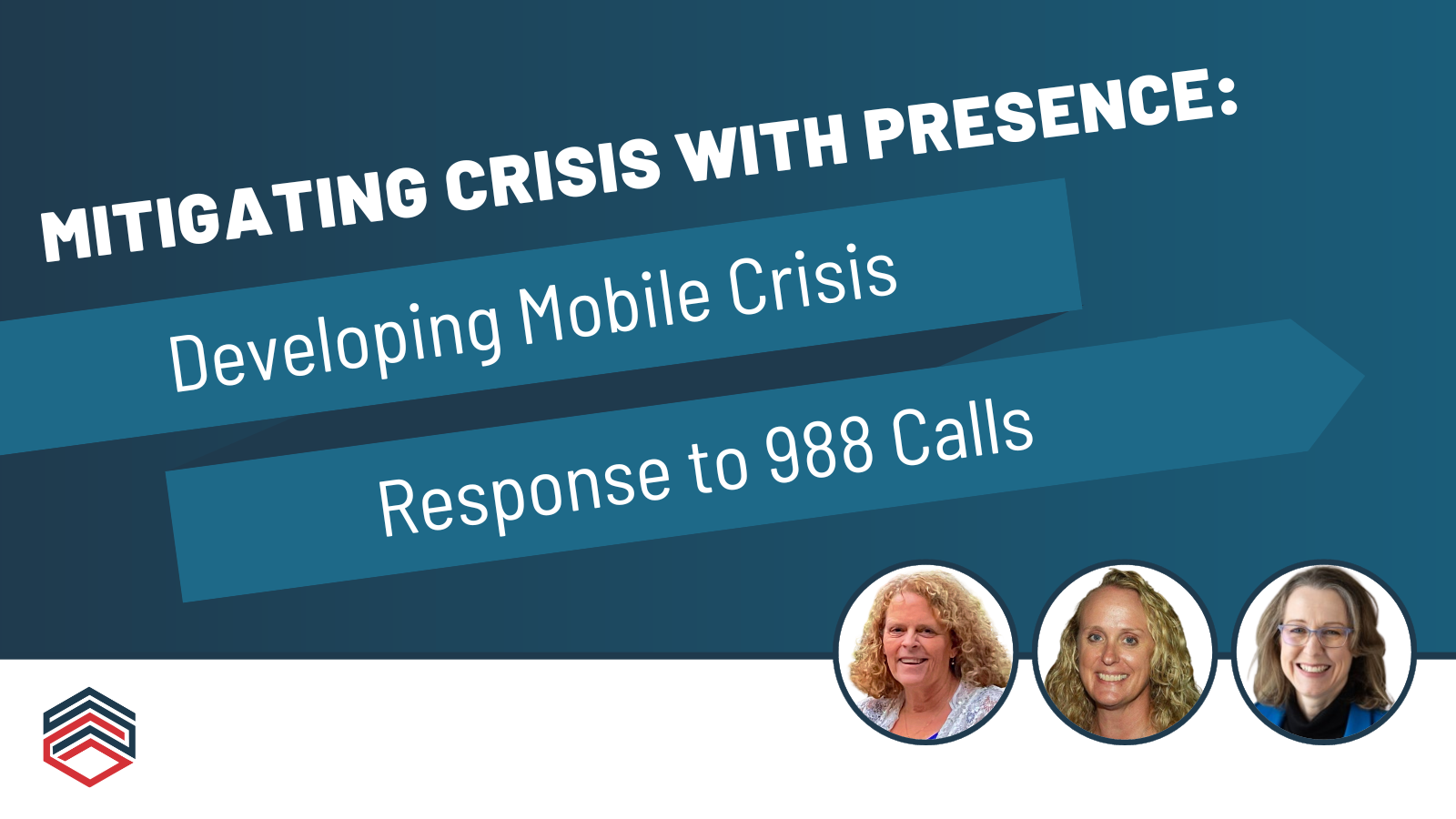SAMHSA’s GAINS Center recently hosted an insightful webinar titled “Mitigating Crisis with Presence: Developing Mobile Crisis Response to 988 Calls.” In light of the July 2022 launch of the 9-8-8 Suicide and Crisis Lifeline, which connects callers to over 200 local crisis call centers nationwide, the webinar discussion delved into the importance of in-person responses for situations that demand immediate support. The speakers provided local and state-level perspectives shared the steps they have taken to build mobile crisis programs, the best practice standards they have implemented, and their lessons learned. They also discussed the cross-agency collaborations that have been developed to support mobile crisis response to 9-8-8 calls in their communities.
Here are the top five takeaways from the webinar, offering a glimpse into the strategies and best practices discussed:
Lessons Learned: Navigating Challenges with Innovation
The speakers candidly shared lessons learned, such as the importance of adaptability when faced with unforeseen challenges. For instance, issues such as the administration of multi-agency partnerships has led to innovative solutions, such as sharing office space, creating new processes for data information sharing, and integrating new technologies; all emphasize the dynamic nature of crisis response.
Cross-Agency Collaborations: Examples of Unity in Action
The webinar spotlighted successful cross-agency collaborations. One compelling example illustrated how collaboration between behavioral health centers and crisis intervention teams significantly enhanced the effectiveness of mobile crisis initiatives. These partnerships exemplify the power of unity in crisis intervention.
Best Practice Standards: Real-World Bedrocks of Crisis Response
Concrete examples were provided to showcase the implementation of best practice standards in 911 call diversion and embedding 988 call takers into 911 dispatch. These standards serve as the bedrock of successful crisis response programs, ensuring a uniform and high-quality approach. Speakers shared specific standards that proved instrumental in their respective programs.
Transportation Protocols: Ensuring Safety in Every Journey
The speakers delved into detailed discussions on transportation protocols, offering specific examples of the types of vehicles used (e.g., SUVs, Ubers) and safety measures implemented (e.g., one staff person in the front of the car and one in the back of the car with the person in crisis). Real-world scenarios highlighted the importance of these protocols in safeguarding the well-being of crisis teams and the individuals they assist.
Incident Preparedness: Providing Autonomy and Training
The speakers shared how they prepare and train staff members for safety incidents. Strategies employed included bringing in law enforcement officers to role-play scenarios and providing autonomy to on-the-scene responders to call for law enforcement back up if they feel it is necessary for their safety.
Conclusion
These key takeaways provide a snapshot of the valuable insights shared throughout the webinar. By embracing these strategies, communities can establish robust mobile crisis response systems that meet the diverse needs of individuals in crisis.
This blog post was developed with the assistance of generative artificial intelligence.


